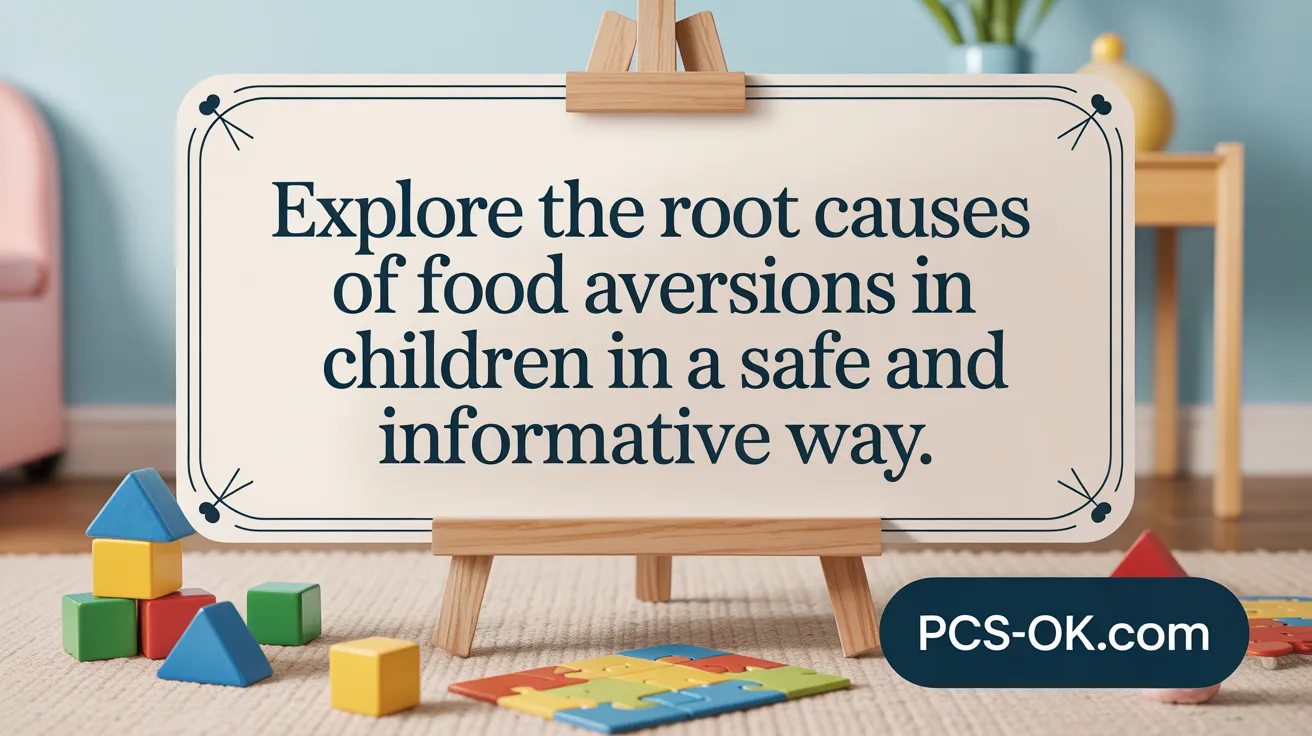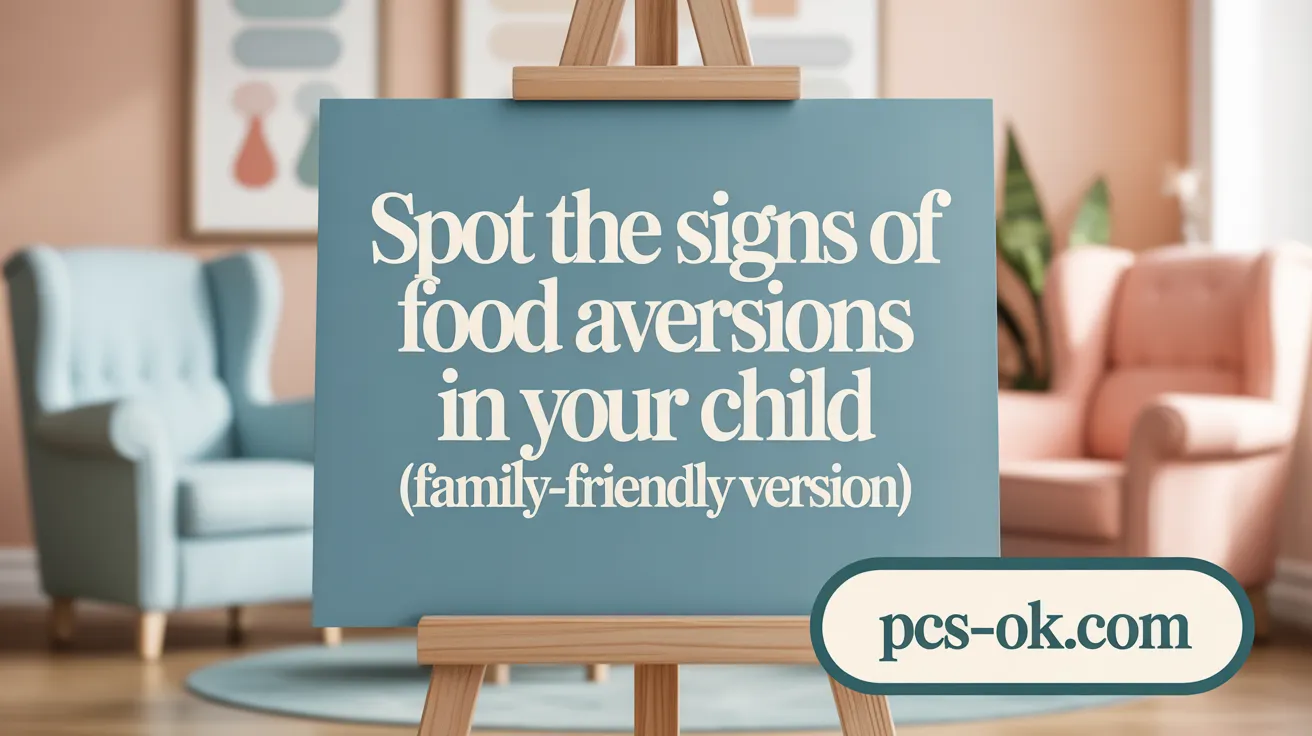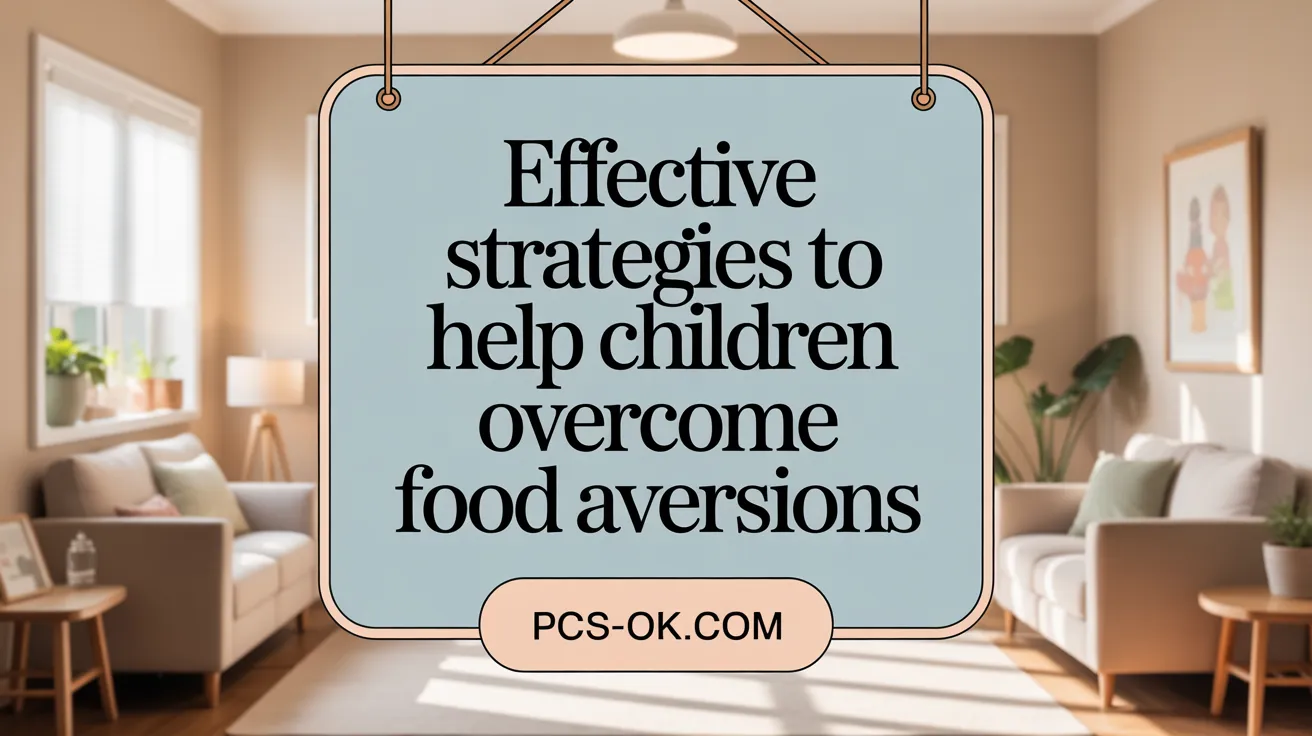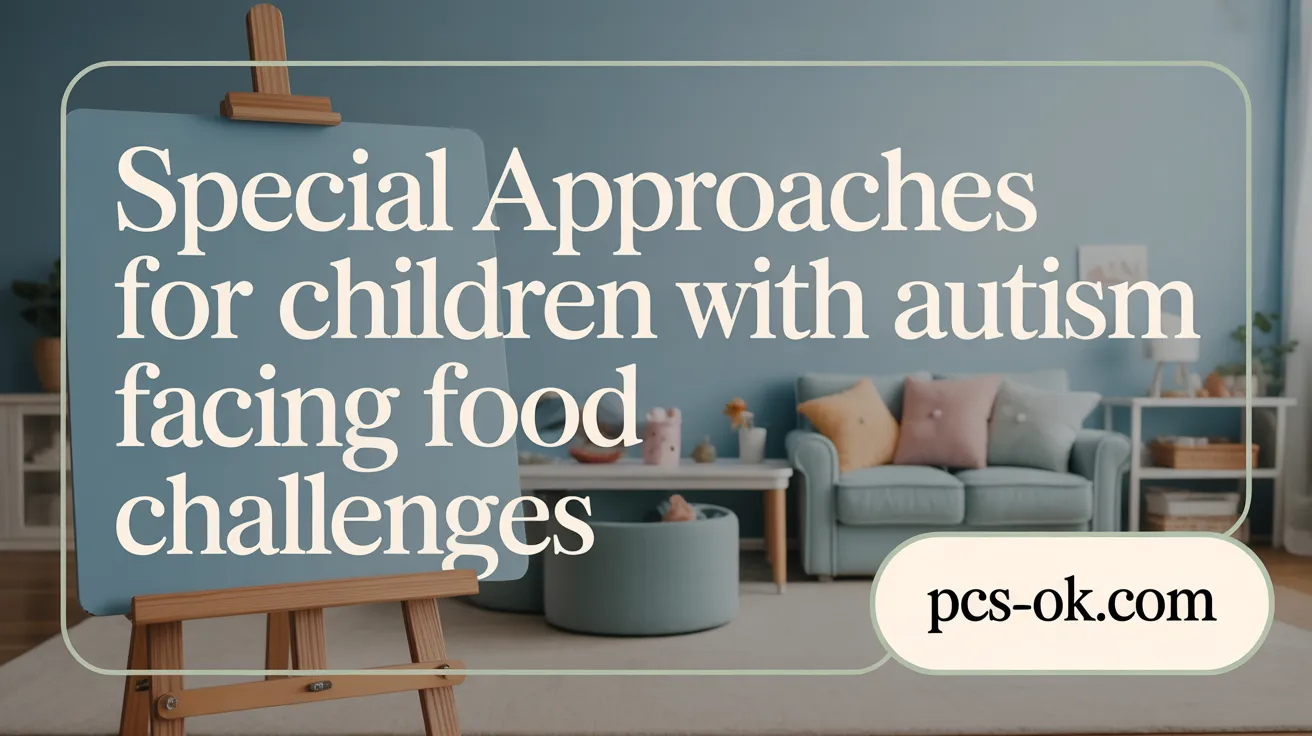Understanding Food Aversions in Children
Exploring Early Eating Challenges
Food aversions in children present a unique set of challenges that go beyond typical picky eating. Understanding what differentiates aversions from common eating preferences, identifying the causes and symptoms, and learning about effective support and treatment strategies are vital steps for parents and caregivers. This article delves into the nature of food aversions, offering guidance on recognizing issues early and fostering healthier eating behaviors.
Defining Food Aversions Versus Picky Eating: Key Differences

What is the difference between food aversions and picky eating in children?
Food aversions in children are characterized by a strong, persistent refusal or dislike of specific foods, often due to sensory sensitivities, negative past experiences, or medical issues. Children with food aversions may gag, become upset, or avoid entire food groups, leading to a limited diet that can impact their nutritional intake.
In comparison, picky eating is generally less severe. Picky eaters typically accept a wide range of foods but show preferences for certain textures, colors, or flavors. They might refuse specific foods but do not usually have extreme reactions or fears related to eating.
Children with food aversions often exhibit signs like poor weight gain, choking, gagging, vomiting, or long mealtimes, and their refusal is often rooted in sensory or physical discomfort. Conversely, picky eaters tend to be more adaptable over time and naturally outgrow many of their food preferences.
Developmental and environmental factors influence both behaviors. Picky eating tends to be a normal phase during early childhood and may improve with age, while food aversions may persist longer and sometimes require professional intervention. For example, sensory sensitivities associated with autism spectrum disorder or a history of medical procedures can predispose children to food aversions.
Severe picky eating, which significantly restricts diet and risks nutritional deficiencies, may resemble food aversion and sometimes necessitate feeding therapy. However, the underlying causes—sensory processing issues in food aversions versus developmental stages in picky eating—are important for differentiating the two.
| Aspect | Food Aversions | Picky Eating | Common Causes | Intervention Needs |
|---|---|---|---|---|
| Intensity & Persistence | Usually intense, often lasting long term | Less severe, often temporary | Sensory sensitivities, trauma, medical issues | Often require professional therapy |
| Behavior & Sensory | Gagging, aversion to textures, negative reactions | Selectiveness, refusal of certain foods, acceptance of others | Sensory processing, medical history | May need intervention if severe |
| Diet Variety & Nutrition | Limited, risk of deficiencies | Usually broader, but may still be limited | Environmental factors, development stage | Possible dietary planning or therapy |
| Developmental & Environment | Often linked to medical or sensory issues, trauma | Influenced by habits, environment, age | Sensory sensitivities, developmental phases | Parental guidance, positive mealtime practices |
Understanding the distinctions between food aversions and picky eating can help caregivers and healthcare professionals determine appropriate strategies. Early identification and tailored interventions are crucial to ensure children maintain a healthy, balanced diet without undue stress or nutritional risks.
More information about these differences can be searched with the phrase: “differences between food aversions and picky eating in children.”
Unraveling Causes and Underlying Factors of Food Aversions

What are common causes and underlying factors of food aversions in children?
Food aversions in children often have complex origins involving sensory sensitivities, previous traumatic experiences, health conditions, behavioral influences, and biological factors.
Sensory sensitivities are a frequent cause of food aversion. Some children are especially sensitive to the taste, smell, texture, or appearance of foods. For example, they might gag or vomit when they see, touch, or taste certain textures or flavors. Sensory processing challenges are common in children with autism spectrum disorder (ASD) and sensory processing disorder (SPD), making these children more prone to developing intense food dislikes.
Negative experiences related to eating or feeding can also lead to aversions. Instances such as choking, vomiting, or painful medical procedures—like surgeries or intubation—can create associations between certain foods or feeding environments and discomfort or fear. These traumatic memories might cause children to refuse foods they previously enjoyed or avoid mealtimes altogether.
Medical conditions play a significant role. Gastrointestinal issues such as acid reflux, food allergies, intolerances, or enlarged tonsils and adenoids can cause pain or discomfort during eating, reinforcing food aversions. Past health problems like food poisoning or hospital visits also contribute to negative associations with food, making it more difficult for children to accept certain foods.
Behavioral factors, including parenting practices, influence the development of food aversions. Techniques such as force-feeding, using bribes, or pressure to eat can create stress and resistance rather than cooperation. Neurodevelopmental disorders like ADHD and autism can add further challenges, as these children might have heightened sensory sensitivities or ritualistic eating behaviors.
Hormonal changes are another factor, particularly in pregnant women experiencing food aversions, which may influence fetal development indirectly through hormonal shifts such as increased levels of human chorionic gonadotropin (HCG). While in children, temperament and individual differences in personality or anxiety levels can affect their food preferences and willingness to accept new foods.
In summary, food aversions in children are generally caused by an interplay of sensory sensitivities, traumatic past experiences, medical conditions, behavioral influences, and hormonal or temperament factors. Understanding these interconnected elements helps in tailoring effective strategies for managing and overcoming food aversions.
Recognizing Symptoms and Behavioral Signs of Food Aversions

How can parents recognize symptoms and behavioral indicators of food aversions in children?
Parents can identify food aversions in children by carefully observing their mealtime behaviors and reactions. Children with food aversions often refuse to eat specific foods despite being developmentally capable of feeding themselves. They may show signs of distress such as crying, tantrums, or shutting down when faced with certain foods.
Physical reactions are common, including gagging, choking, vomiting, or nausea, especially with foods that have textures or smells they dislike. Messy eating, slow eating pace, and reluctance to handle or try new foods are typical behavioral cues.
These children might avoid foods sharing similar sensory qualities—like texture, color, or smell—that trigger their discomfort. For instance, a child may refuse all foods with a slimy texture or those that are dark in color.
Nutritional concerns can also signal aversions. Signs such as poor weight gain, dehydration, or unintentional weight loss suggest avoidance is impacting their health.
Early recognition of these behaviors is crucial. When combined with signs of emotional distress during mealtimes or persistent refusal to eat specific food groups, it indicates that the child might have a food aversion.
Understanding these signs allows caregivers to seek appropriate interventions, such as consulting a pediatric feeding specialist, to prevent nutritional deficiencies and promote healthier eating habits.
Diagnostic Approaches for Food Aversions and ARFID in Children

Diagnosing food aversions and ARFID—the Avoidant/Restrictive Food Intake Disorder—in children requires a thorough and multifaceted approach. Healthcare professionals, including pediatricians, dietitians, and mental health specialists, work together to identify underlying causes and determine appropriate interventions.
The process begins with a detailed feeding history. Clinicians ask about the child’s eating patterns, specific food preferences or refusals, reactions during meals, and any past medical or traumatic events related to eating. Observing the child’s mealtime behavior is crucial; signs such as gagging, crying, or refusing entire food groups can indicate specific aversions or restrictive eating habits.
Physical examinations are performed to assess growth, weight, and nutritional status. Blood tests and other laboratory analyses may be ordered to rule out medical conditions like food allergies, intolerance, or any infection that might contribute to feeding issues. These investigations help distinguish dietary restrictions from health problems requiring targeted treatment.
To standardize diagnoses, clinicians use established tools aligned with criteria from the DSM-5. The Eating Disturbances Assessment—5 (EDA-5) and Structured Clinical Interview for DSM-5 (SCID-5) are common instruments. The Pica, ARFID, and Rumination Disorder Interview (PARDI) and similar questionnaires assess symptoms such as limited food variety, distress about eating, and fear of adverse effects like choking. Such tools help verify if the child’s eating patterns meet diagnostic thresholds while ruling out concerns linked to body image or weight, which distinguishes ARFID from other eating disorders.
Early diagnosis benefits from a multidisciplinary team evaluation. This collaboration ensures comprehensive assessment of medical, nutritional, and behavioral factors. The goal is to confirm whether the child’s eating issues are persistent, significantly impacting growth or quality of life, and to develop individualized treatment plans.
In summary, diagnosing food aversions and ARFID involves a combination of clinical history, behavioral observations, physical exams, laboratory testing, and standardized assessments. Prompt and accurate diagnosis enables early intervention, improving the child’s nutritional health and mealtime experience.
Effective Treatment and Management Strategies for Food Aversions

What treatment options and management strategies are effective in addressing food aversions?
Addressing food aversions in children requires a multifaceted approach tailored to each child’s specific needs and sensitivities. One of the most effective methods is behavioral therapy, particularly gradual exposure and desensitization techniques. These often involve working with feeding therapists or occupational therapists who guide parents and children through small, positive steps towards trying new foods.
Sensory integration therapy plays a significant role, especially for children with sensory sensitivities. This approach helps children better tolerate different textures, tastes, and smells by providing controlled sensory experiences. Techniques like food chaining—where children are introduced to new foods that are similar in texture or flavor to those they already accept—help expand their diets gradually.
Nutritional counseling and strategic meal planning are critical components. Dietitians assess the child’s nutritional status and develop plans that ensure adequate intake despite limited food choices. They often recommend hiding disliked foods within acceptable meals or substituting with nutrient-rich alternatives.
Creating a positive mealtime environment is essential. Parents are encouraged to establish routines, serve regular and predictable meals, and foster a relaxed and pressure-free setting. Avoiding force, punishment, or emphasizing the child’s refusal helps reduce anxiety around eating.
In severe cases, medical interventions may be necessary. These might include tube feeding to maintain nutrition or medications to stimulate appetite or reduce anxiety. Hospitalization and multidisciplinary care involving pediatricians, therapists, and dietitians may be required for complex or persistent food aversions.
Overall, early intervention and consistent support can significantly improve a child’s willingness to accept a broader range of foods, leading to better nutrition and healthier growth.
Supporting Children with Autism and Developmental Conditions Through Food Aversions

What special considerations should be taken for children with autism or other developmental conditions who experience food aversions?
When managing food aversions in children with autism or other developmental conditions, it is essential to consider their sensory sensitivities, such as textures, tastes, smells, and visual aspects of food. These sensitivities often form the core of their selective eating behaviors. A tailored, multidisciplinary approach involving several professionals can be particularly effective.
Speech therapists, occupational therapists, dietitians, and mental health specialists work together to develop strategies that accommodate sensory processing challenges. This may include gentle, step-by-step exposure to new foods, sensory integration techniques to desensitize hypersensitivities, and behavioral approaches that utilize positive reinforcement to encourage acceptance.
It is also important to rule out underlying medical issues like gastrointestinal problems, food allergies, or intolerances that might worsen food aversions.
Creating a stable and predictable mealtime environment helps alleviate anxiety. Offering children choices between safe, familiar foods and new options gives them a sense of control, which can reduce resistance.
Maintaining a calm demeanor during meals and avoiding pressure to eat can lower stress levels, creating a more positive association with mealtime.
Involving children in meal planning and preparation, gradually introducing varied textures and flavors, and allowing for sensory play with food are techniques that promote comfort and curiosity.
Professional guidance ensures safe, effective intervention, especially when dealing with severe food aversions or nutritional concerns. Through patience and tailored strategies, children can gradually expand their dietary preferences, leading to better nutrition and mealtime enjoyment.
Fostering Healthy Eating Habits Through Understanding and Support
Understanding food aversions in children is crucial for providing the right support and interventions that promote healthy growth and nutrition. Differentiating food aversions from picky eating allows caregivers to identify when professional help is needed. Recognizing the multifaceted causes and being attentive to behavioral and physical signs enable early diagnosis and effective treatment. With strategies that include gradual exposure, sensory therapy, nutritional guidance, and a positive mealtime environment, children can overcome barriers to trying new foods. Special consideration for those with autism and developmental conditions ensures tailored support addressing unique sensory and behavioral challenges. Ultimately, patience, consistency, and informed care empower parents and professionals to help children develop healthier, more varied eating habits.
References
- What is food aversion vs picky eating?
- What Causes Food Aversion?
- Avoidant/Restrictive Food Intake Disorder (ARFID)
- Food Aversion 101: What You Need to Know – NAPA Center
- Mealtime Minefield: Childhood Food Aversions – Nutrition
- Food aversions | Problems and symptoms | What we treat
- Food Aversion Meaning & Causes
